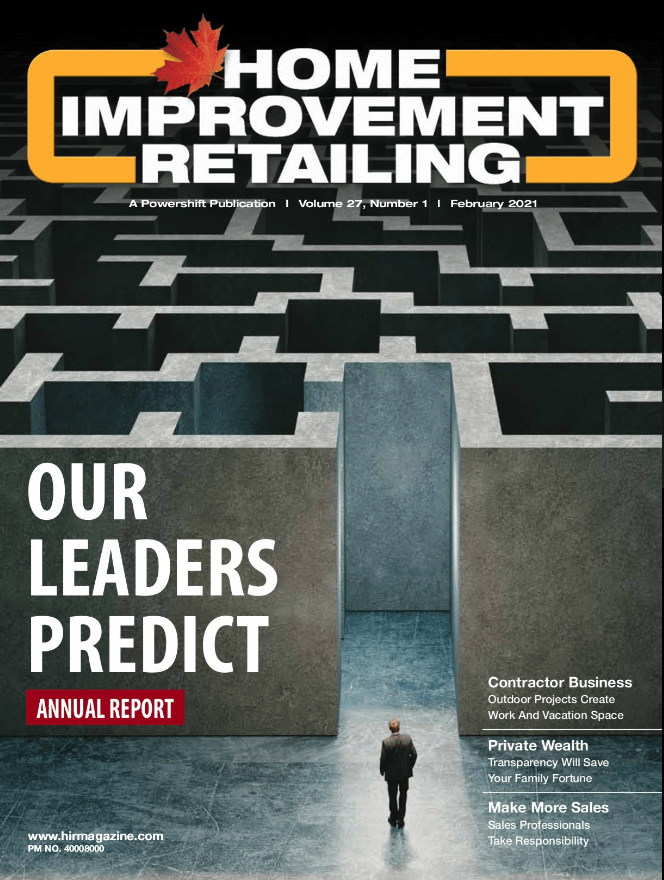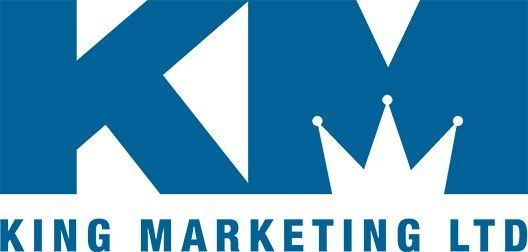2021 : Our Leaders predict with Paul Crawford
In February 2021 King Marketing's President, Paul Crawford was asked to contribute his predictions for the home improvement sector for Home Improvement Retailing's Annual Report.
Here's what he had to say...


What an unbelievable year it has been. We came into 2020 thinking there might be an economic slowdown may be even a recession, and we came out of the year with record sales activities and a home improvement and hardware industry that is robust and vital. As troubling as it is to say, the pandemic has been beneficial for our industry. The home has become our sanctuary and consumers have spent their precious dollars on the only thing they can and that is renovations at home enhancements. It started in the spring with a surge in lawn and garden purchases and has not stopped. Our industry competes for every consumer dollar spent with other industries - be that travel, sports, entertainment, and hospitality. With all these businesses affected, perhaps it is no surprise that home improvement retailing is doing well.
However, we have not been unaffected. Sources of supply, logistical issues, and staffing issues have all played their part to make it a tough year in the home improvement retail industry. With lead times of many weeks or even months, it is going to be sometime before the stores are fully stocked with all products. I recall one building supply outlet stating that 50% fill rates were actually good. Still, compared to other areas of the economy, from a business point of you, we should be thankful.
Supply Issues Remain
For the first 6 to 8 months of 2021, supply issues will remain the main source of aggravation. Manufacturers are scrambling to increase production, but, even if they can produce more product, there are other issues beyond their control. The actual packaging for that product might be in short supply or the shipping companies cannot schedule trucks to transport the products. This is not only been an issue for the manufactures but also for the retail dealers who have had issues sourcing products from distributors or even their own distribution centers. Allocation of products by manufacturers to retailers has become the norm and manufacturers in some cases can choose who they would prefer to do business with.
One consequence will be the inevitable price increases. We have seen it in building materials and we will see prices increase this year for hardware as well.
Only when the vaccine has been rolled out to a significant portion of the population will we see things “normalize“ in our industry. When the general public can travel again without restrictions and fear, attend sports and other live events, and congregate in groups, we will see a change. And, we’re strong sales likely again this spring and summer, retailers have hopefully placed their orders early.
We have also witnessed in 2020 an unprecedented move from the urban core to the suburbs or even some distance outside cities. According to a CBC report, from July 2019 to July 2020, Toronto, Ontario, lost net 50,000 inhabitants, and 24,000 have left Montreal, Quebec. The report says cities like Oshawa, Ontario, Kelowna, BC, and Halifax, Nova Scotia are reaping the benefit of this exodus and are seeing the fastest job growth. People do not want to live in condos and high-rises, preferring houses on lots. After all, more of us can and will continue to work from home.
As a national sales organization, King Marketing has over 60 representatives from Vancouver Island to Newfoundland and is by far the largest national sales agency exclusively working in the home improvement and hardware retail sector in Canada. Our reps live close to the stores. We have developed close relationships with the local dealers and we are a trusted resource. With travel being restricted, our represented manufacturers have enjoyed uninterrupted sales calls for the most part from our team because, with the stores’ approval, we continue to work with the dealer stores. We are involved in doing some national resets right now, a perfect time to complete these while the stores might be restricting general public access. While we are in the stores, we are providing valuable product knowledge to the store creating brand advocates for the products we represent. Well informed and knowledgable store employee is more likely to recommend products they know something about than products where they have received no training.
We are very much looking forward to 2021 and continuing the work we do as manufacturers’ representatives.
For more see HOME IMPROVEMENT RETAILING, February 2021: Our Leaders Predict





